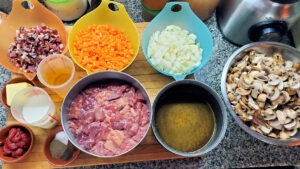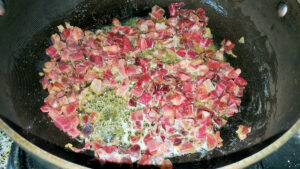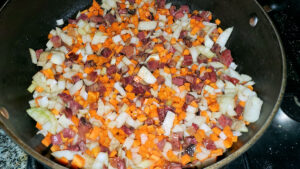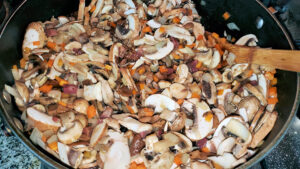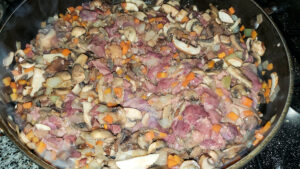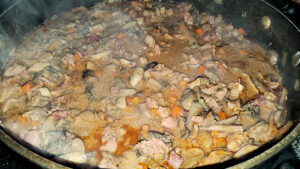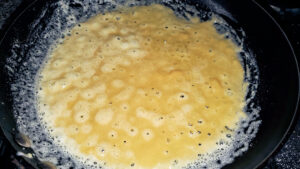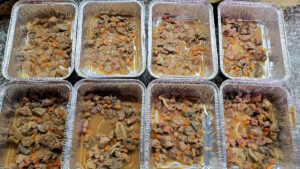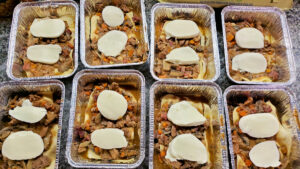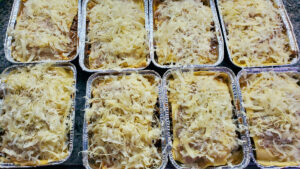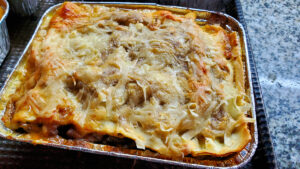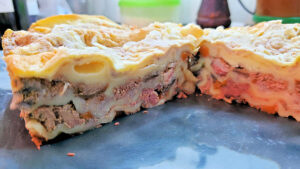Yes, this Quarantine is going to go on forever. Here we are, two weeks into being allowed to go out in the evenings for a walkabout, finally, at the point we were almost three months into it, for a bit of exercise. The city’s mayor just extended the hours by two to give us a little more time outside, and the president of the country and governor of the province are demanding not only that he take it back, but also that we go back to “phase 1”, with no outside time allowed again other than our weekly trip to the supermarket and pharmacy. Why? Because, as I mentioned in the last post, cases of covid are on the increase here – mostly in the poorer neighborhoods and the villas, but obviously, there’s some intermingling, and cases are starting to spread in other parts of the greater metro area as well. While a bit back, we were “past the peak”, which is why restrictions started being eased (especially outside of the big cities), now they’re saying that wasn’t the peak at all, and we shouldn’t expect it for another 2-4 weeks.
At this point, though the official announcement of the quarantine is only through this Sunday, the 28th, it’s expected we’ll get another two week extension to July 12th, and probably another after that until the end of July. At a minimum. I’ve got mixed feelings about it – yes, it seems like overall we’ve kept some control on the cases here in Argentina, even with the new spike, and that many more of us have come through it safely (and still will) than otherwise might have happened (especially watching what’s going on in neighboring Brazil, where they’ve chosen to pretend that it’s just life as usual, and more than 50,000 have died, and climbing, making it the second highest number of deaths in the world after the US). At the same time, between economics and simple socialization, the mental and financial health toll here is climbing.
On to the food part of the post! This last weekend, the highlighted dish was an Italian specialty from the Marche, in central eastern Italy. It’s a layered pasta, similar to lasagna, though not the same. There are variations in both its origin stories, as well as how it’s prepared, within various parts of the region. And the origin story has a lot to do with how it’s prepared, because the two main origin stories are almost diametrically opposed. One has it that it was a dish created for nobility, utilizing tender cuts of veal, hand cut, along with the finest prosciutto, wild cremini mushrooms, and sweetbreads. The other has it as a dish created by the poor, who didn’t have the money for “meat”, and used scraps from prosciutto, whatever field mushrooms they could find, and chicken livers and/or giblets. If I were to venture a guess, the latter is probably the true origin, and the former is a dish that was created to elevate a “popular dish” to be served to those of wealth – a common enough story in history.
I learned to make it the “poor” way. It’s a dish rarely seen in Italian restaurants outside the Marche. I don’t remember ever seeing it in New York, though I’m sure there are places that offer it. Here in BA, as best I know, there’s only one restaurant that serves it, Regionale Trattoria. I liked their version, though thought the bechamel layer was a bit too thick – but, I’m getting ahead of myself. Let’s cook!
There’s a lot going on here… and this is just the ragú, there’s still the pasta, the white sauce, and the cheeses! Starting at the back – diced prosciutto, chopped carrot and onion, and a bowl of mixed sliced mushrooms – I used button mushrooms, baby portobellos, and some dried “mixed mushrooms” that I had in the cupboard and re-hydrated in warm water. Butter, milk, white wine, tomato paste, a mix of salt, pepper, nutmeg, and clove, diced chicken livers, and beef stock. Note, this is the “no meat” version, as in, no diced veal – the way I learned it, being the “poor folk” version, it simply uses a broth made from the bones to get the flavor of the meat the family couldn’t afford. This is obviously slightly stepped up from that version, with a rather good prosciutto, and the mix of mushrooms. Note, also, the lack of garlic – I don’t know if it was a family thing of the person I learned it from, but they didn’t use garlic. Some of the recipes I’ve seen online do, some don’t, so it may also be a regional thing.
Saute the prosciutto in the butter until browned and almost crisp.
Add the carrots and onions and continue to saute for a few minutes.
Add the mushrooms and the spices, and cook until the mushrooms have cooked down a fair amount. The way I learned it, the mushrooms are the real “meat” of the dish, versus the versions out there that use them simply as a flavoring.
Add the chicken livers and the tomato paste and cook until lightly browned.
Add the milk and wine, and just enough of the beef stock to cover. Bring to a boil, turn the heat down to medium-low, and cook for half an hour, which should meld the flavors and reduce the amount of liquid.
And, that’s our ragú!
Just as a side note – the basic difference to the nobility version would be that I’d have diced up some veal and browned that in place of the mushrooms, and the sliced porcinis and sweetbreads, would both be cooked and layered separately in the construction of the dish.
Let’s make our white sauce…. our besciamella, the Italian word for a bechamel.
Flour and butter, cooking over medium heat, whisking regularly so it doesn’t burn.
Add warm milk and bring to a simmer, whisking continuously so it doesn’t form lumps. Season with salt, pepper, nutmeg, and clove. Ready. Make pasta! I’m not going to demo that – mine is a simple semolina flour and egg pasta, which is also a step above the poor version, where it would likely be made with just semolina and water. Roll out thin and cut into rectangles for layering. If it’s fresh pasta, it doesn’t need to be par-cooked. If I were using boxed lasagna noodles, I’d blanch them for about two minutes in boiling salted water and then use them.
Okay – I was making individual portions for our delivery service, so rather than in a big pan, I cooked these direct in separate tins. Put a small amount of the ragú in the tin, just so the bottom layer of pasta doesn’t stick.
Top that with a rectangle of the pasta, a thin layer of the bechamel (about 1/4 of the amount made, or slightly less), a layer of the ragú, and some fresh mozzarella. Repeat that once, and top with a final third rectangle of pasta.
Atop that third sheet of pasta, the rest of the bechamel – about a quarter inch thick, and then a lot of grated grana padano cheese (or whatever your preferred hard grating cheese is). Here, I used what’s called gran pampeano, which seems to be the closest in flavor to Italian grana padano readily available.
And… into the oven to bake four about 40 minutes until golden brown. During the last five minutes of cooking, I brush the top with a little melted butter just to get a nice sheen and a real golden color.
And, there you have it, Vincisgrassi, my style. Facebook keeps translating it for people who have their auto-translate feature on as “Winning fat”, which may not have helped online sales – several people commented on it. (And Google Translate thinks it’s an Icelandic word but gives no translation.) Hey, I didn’t name it – nor is it an accurate translation, except sort of by combining two languages – vincis is Latin for “you win” and grassi is Italian for “fat”. So – “you win fat”. And believe me, make this, and eat it, and you do win!
Just to see what it looks like inside – here’s one that’s chilled, but makes it easier to see the layers.

